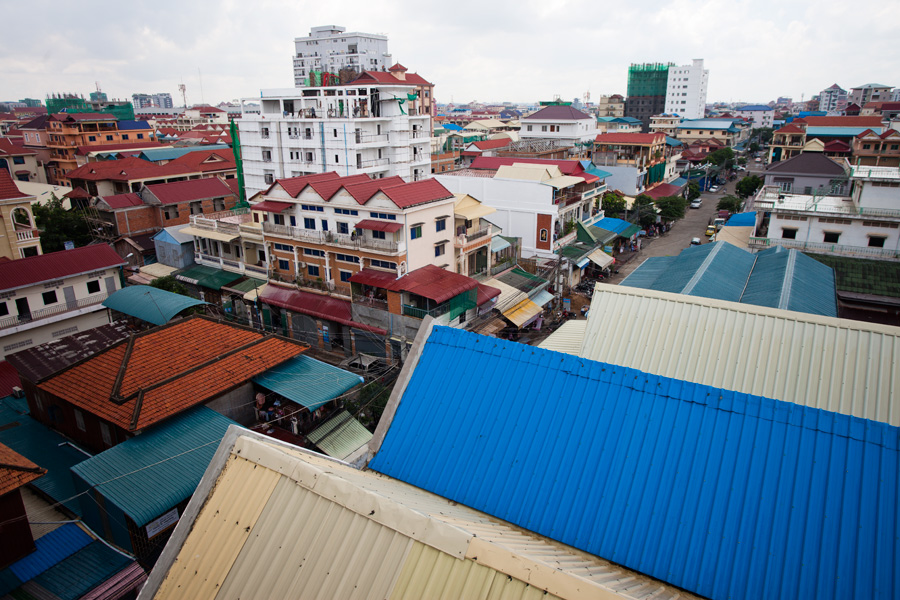Phnom Penh and Bangalore – A Tale of Two Cities
 I was visiting Phnom Penh, Cambodia, last week and stayed in the city for four days. Everyday, I was surprised how much this city resembled Bangalore–the city of my residence–in many ways. Back home, I decided it is worth making a list of things that I found very similar in both the cities. They are not necessarily nice things, but similar, nevertheless. Here they are.
I was visiting Phnom Penh, Cambodia, last week and stayed in the city for four days. Everyday, I was surprised how much this city resembled Bangalore–the city of my residence–in many ways. Back home, I decided it is worth making a list of things that I found very similar in both the cities. They are not necessarily nice things, but similar, nevertheless. Here they are.
1. Tree lined avenues. Both cities have many tree lined avenues, and there has been an attempt to continue the tradition. Bangalore was once famous for its trees which are slowly getting the axe, thanks to growing traffic and subsequent widening of roads. Nevertheless, you can still see saplings on both sides of the road in new localities and new roads. Thankfully, the trees in Phnom Penh continue to stand tall. But they are seen more in numbers in older areas near the Royal Palace and closer to the river. I have seen saplings planted along the road in some newer parts as well. In both cities, trees also frequently dominate the footpaths and force the pedestrians into the road.
2. A traffic dominated by two-wheelers, and chaos. Two wheelers make up for a significant part of the traffic on the roads in Phnom Penh as well as Bangalore. As in Bangalore, drivers and riders of Phnom Penh strongly believe that road rules are meant for other people. The best way to cross a road is to continuously watch out in all directions. Never make the mistake of believing that traffic in certain direction sticks to certain side of the road (left in Bangalore, right in Phnom Penh). Bangalore’s traffic these days is increasingly seeing more four wheelers, but not so much in Phnom Penh. Another dominating feature of Bangalore is the auto-rickshaws, whereas remorks (tuk-tuk) takes that position in Phnom Penh. Whatever constitutes the traffic on either cities, you are assured of chaos.
3. It’s a big construction zone. Phnom Penh, it appears, is perennially under construction. I could feel that during my short stay. What was perhaps a city of duplex buildings is now making way to a skyline, dominated by ugly glass facades. Look anywhere and you will see a new tall building in the making. It’s not just the buildings, even roads seem to be always being built. This perennial constriction has also made the city very dusty. Now re-read this paragraph replacing ‘Phnom Penh’ with ‘Bangalore’.
4. A large expat population. It was surprising to find expats in every corner in Phnom Penh. Bangalore too has a large expat population, although not as densely as in Phnom Penh. In both cities, they seem to keep to themselves and build their own communities. But Phnom Penh’s expat population seems to have been more entrenched with a lot of people living for very long, while my guess is that Bangalore’s expat population is more floating. Open an English newspaper in Phnom Penh and you will see that most of the writers are expats, even dishing out opinions on matters of politics and governance in Cambodia, which is very unlikely to happen in Bangalore.
5. Occupied footpaths. Feel lucky if you find an uninterrupted footpath lasting more than a hundred meters. They are occupied by street-vendors in busy areas and by cars and bikes in quieter areas. The situation in Phnom Penh is much better than Bangalore though.
6. Coffee Shops Everywhere. You are never too faraway from a coffee shop in Phnom Penh, especially in the central parts of the city. This is true with Bangalore too. The difference? Most Phnom Penh’s coffee-shops are one-shop establishments whereas we have home-grown and international chains operating in Bangalore. The menu, no matter where you go, is pretty much the same.
7. Few open spaces. Much as in several localities in Bangalore, most places in Phnom Penh are packed with buildings in all sizes, leaving very little open space. Bangalore is perhaps relatively better than Phnom Penh as it has several designated open spaces at least in the well-planned localities. But both cities feel very claustrophobic.
8. Garbage everywhere. Just walk a block or two anywhere in either of the cities and you are sure to find garbage dumps by the road. The situation in Bangalore is worse compared to Phnom Penh. I have noticed that people from both cities take pleasure in throwing garbage, such as plastic wrappers, all over the place. The idea of bust bins and clean spaces is a revolutionary concept in both cities.
So how do the two cities compare beyond the similarities?
The good thing about Bangalore is a working public transport. As of today, Phnom Penh is just beginning to experiment with introducing public transport in the city with just three operating routes. Cost of living is lower is Bangalore (looking at the price of food at restaurants and a few groceries) and I have a feeling that an average Bangalorean has greater purchasing power than an average Phnom Penh resident. Phnom Penh has a river front which makes the city a million times more beautiful than Bangalore. But Bangalore has enviable green spaces bang in the center of the city that Phnon Penh could do with. When it comes to weather, Phnom Penh is much hotter and more humid. Phnom Penh’s four-wheeler traffic is dominated by big cars, whereas Bangalore wisely prefers smaller cars.
Have you been in both these cities? Is there anything you can add to the list?